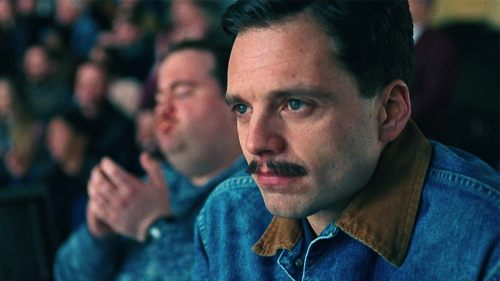A CURE FOR WELLNESS Review: Runs Dry On Narrative, Drips With Aesthetics
Lockhart is not a well man. A shockingly young Wall Street stockbroker, Lockhart has had to step on the shoulders of a lot of good people to get where he’s at, and worked an ungodly amount of hours, alone, at his desk, crunching numbers without a loved one or significant other in sight, in order to achieve success. Maybe that’s why he hasn’t been sleeping lately. Perhaps that’s the reason why he’s been craving cigarettes again. But then again, who needs friends when you have money? Who needs companionship when you have respect from your peers? He may be lonely, exhausted, and hovering on the brink of proper health, but at the end of the day, Lockhart has done what he set out to do, and that’s to be ridiculously rich. He’s got it all.
However, when he is called upon by his firm to travel to a wellness center in the Swiss Alps, retrieve head CEO Pembroke, and return with him to New York, Lockhart finds himself questioning everything he ever knew. It all starts when he meets head director of the hospital, Director Volmer, who tells him that everyone comes to this particular wellness center looking for the cure. He says that the regular world is harmful to the human spirit because people are too obsessed with money and power, and that’s why people need to retreat to a safe space like this medical spa, in order to escape the pressures of everyday life. Volmer tells Lockhart that his relentless ambition is making him sick, and recommends that he begin treatment immediately if he wants to be well again. Lockhart reluctantly agrees to become a patient, thinking that Volmer is a good man, but something sinister is afoot, and not all is as it seems when one begins the quest to find A Cure For Wellness.
Director Gore Verbinski and cinematographer Bojan Bazelli have joined forces again, and the result is a film that is as visually striking as it is eerily mysterious. A Cure For Wellness drips with moody atmosphere, the evidence of their purposeful collaboration strewn across every precisely measured shot, seen in each reflected surface, and iS evident in every hazy shadow. It is a truly breathtaking film that balances out its long runtime with hypnotic aesthetics that keeps the viewer intrigued far beyond the point where it becomes needlessly convoluted.
As Lockhart makes his way through this labyrinth of a sanitarium, the layers of his personality peel away. He begins to realize that wealth and recognition from fellow business associates doesn’t necessarily equal happiness, and that perhaps the consumer-driven, fast-paced life he’s always known is worth trading in for a little peace and quiet. In its own way, the movie does a terrific job of stirring up some fascinating discussion topics, such as the true definition of sickness, and whether or not it really just means constantly giving into one’s own selfish desires. What does it mean to be well? Is wellness measured by societal popularity? Success at work? An impressive salary? Is it possible to achieve wellness when we’re constantly crowded with people and bombarded with stress, or is it necessary to travel to a faraway castle on top of a hill and engage in hydrotherapy?
Sadly, the film does a better job of asking questions than answering them. As thought provoking as A Cure For Wellness is, this unnerving thriller about the untrustworthiness of modern medicine fails to stick the landing, and winds up throwing everything at the screen in the end to see what sticks. There’s just too many different endings shoved in (do we really need so many variations of the same fairy tale about the Barron and his wife?) with little to offer in the way of solid, logical conclusions to the long journey we’ve taken thus far. The first half of the film is mesmerizing and unsettling and weirdly cool, as it embraces the dark gothic nature of the story, and basks in its own peculiar method of storytelling. However, the second half is a huge tonal shift from utterly creepy to arguably hokey, as it trades in its eerie vibes for more typical action adventure beats, and loses what made it so wicked in the first place.
It’s a shame, really, because one of the things that makes this movie so special is how bold it is. From the hard R rating to the nudity to the drugged patients and floating bodies and slimy eel hallucinations, A Cure For Wellness sets itself up to be one badass sanitarium film. It’s really daring to have a movie from a big Hollywood director that takes such strides to be different, from its premise, to its marketing campaign, asking the audience to take a lot on faith and just trust that what they’re about to see will be worth their time, despite not being tied to any pre-existing franchise in such a superhero heavy cinematic universe. However, for as hard as it tries to steer away from the typical Hollywood scenario, in the end, it just circles right back around to the cliché gung-ho Disney ride action packed finale.
Despite its inability to deliver a third act that matches the intensity and enigmatic nature of the first two, A Cure For Wellness is still very much worth seeing. It’s inconsistent, tonally uneven, a bit goofy at times, and kind of goes off the deep end during the finale…but goddamn is it pretty. The aesthetics are so magnificent and otherworldly that it almost makes up for its shortcomings. The motifs of water and sea creatures and drowning are so beautifully illustrated in each shot of the sanitarium, and the notion of incurable sickness, and the overpowering feeling of being lost within the medicinal system are wholly present throughout the film, permeated within each damp, discolored wall. With visuals like these, one wonders: is a narrative aspect of this story really necessary to enjoy the film? That’s up to the viewer, of course, but one would hope that if Verbinski took two and a half hours to tell a tale which he felt was a necessary portion of the film, he would at least take the time to make sure that the story he’s telling makes a little more sense.



